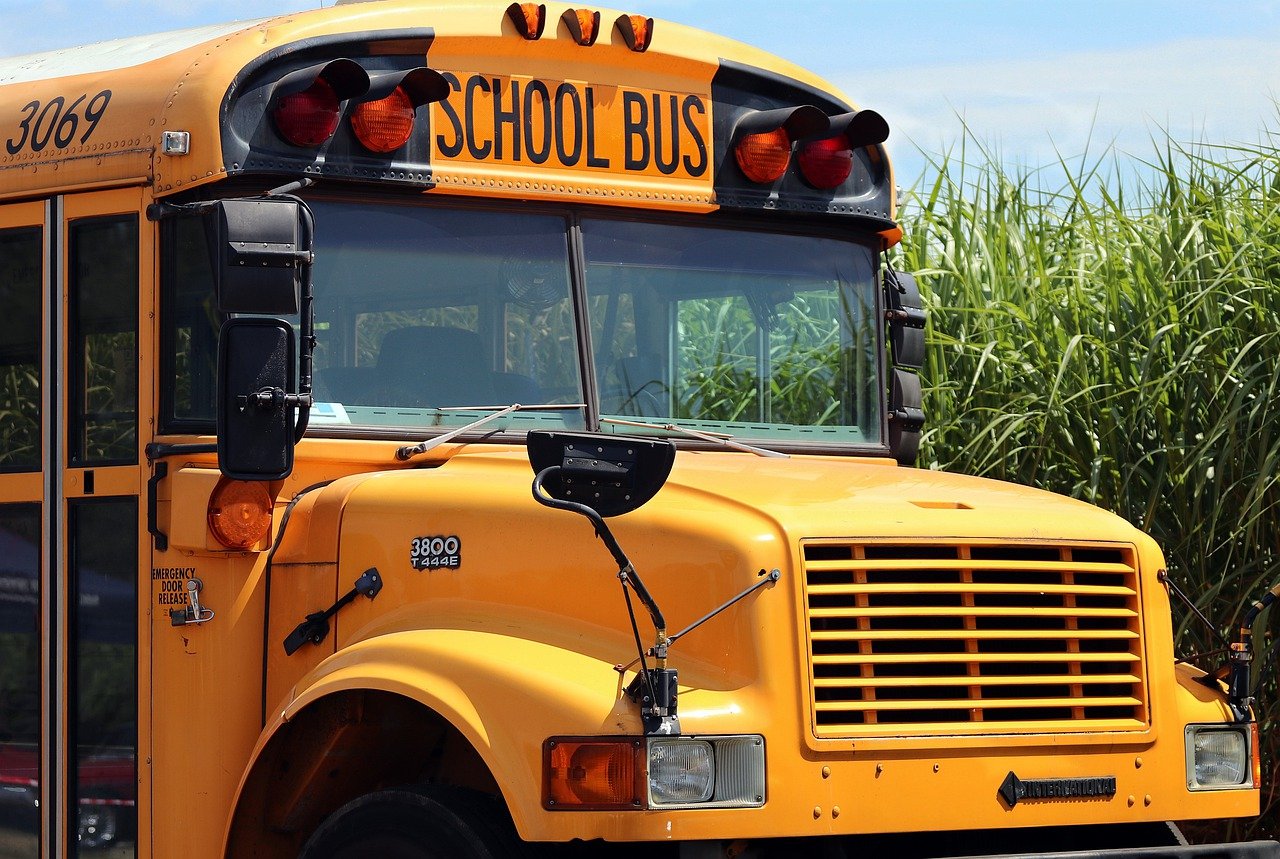How Much Do School Principals Make in Each State?

School principals serve as the chief executives of their educational institutions, overseeing all school operations, managing staff, ensuring student success, and representing their schools to the broader community. Their compensation varies dramatically across the United States, reflecting differences in regional economics, district size, educational requirements, and local funding priorities. This comprehensive analysis examines principal salaries across all 50 states, identifies regional patterns, and explores the factors that influence these significant differences in pay.
National Overview of Principal Compensation
According to the latest data from the Bureau of Labor Statistics, the national median annual wage for elementary, middle, and high school principals was $103,460 as of May 2023. This figure represents a midpoint in the salary range, with the lowest 10 percent of principals earning less than $70,050 and the highest 10 percent earning more than $163,010 annually.
Zippia’s research reveals that the national average principal salary is slightly higher at $111,719, with an average hourly rate of $53.71. This discrepancy likely reflects methodological differences and the inclusion of different data sources in these calculations.
State-by-State Principal Salary Rankings
Principal salaries vary substantially from state to state. Below is a comprehensive breakdown of average principal salaries by state, according to the most recent data:
Top 10 Highest-Paying States for School Principals
- New York: $132,640 (range: $84,000-$207,000)
- Connecticut: $132,479 (range: $84,000-$208,000)
- California: $122,066 (range: $74,000-$198,000)
- Massachusetts: $119,787 (range: $74,000-$193,000)
- Vermont: $118,967 (range: $72,000-$194,000)
- West Virginia: $118,916 (range: $75,000-$187,000)
- Maryland: $116,276 (range: $73,000-$184,000)
- New Jersey: $115,662 (range: $72,000-$184,000)
- Pennsylvania: $109,922 (range: $68,000-$175,000)
- Delaware: $109,816 (range: $68,000-$174,000)
Middle-Range States for Principal Salaries
- Rhode Island: $106,051 (range: $65,000-$173,000)
- Michigan: $104,660 (range: $65,000-$167,000)
- Washington: $103,658 (range: $63,000-$168,000)
- Virginia: $103,223 (range: $64,000-$164,000)
- South Dakota: $100,210 (range: $64,000-$156,000)
- Ohio: $98,631 (range: $61,000-$157,000)
- Indiana: $98,295 (range: $61,000-$157,000)
- North Carolina: $97,441 (range: $61,000-$154,000)
- New Hampshire: $96,376 (range: $57,000-$161,000)
- Illinois: $95,002 (range: $59,000-$151,000)
Bottom 10 Lowest-Paying States for School Principals
- Alabama: $75,274 (range: $47,000-$119,000)
- Missouri: $75,898 (range: $47,000-$120,000)
- Utah: $77,187 (range: $47,000-$125,000)
- Florida: $77,269 (range: $48,000-$123,000)
- Montana: $78,524 (range: $49,000-$123,000)
- Tennessee: $78,861 (range: $49,000-$125,000)
- Iowa: $78,881 (range: $49,000-$125,000)
- Idaho: $80,442 (range: $49,000-$131,000)
- Mississippi: $81,724 (range: $51,000-$129,000)
- Hawaii: $51,515 (lowest in the country)
Regional Patterns in Principal Compensation
Principal salaries follow distinct regional patterns that generally correlate with cost of living, regional economics, and historical funding priorities for education.
Northeast Region
The Northeast typically offers the highest principal salaries nationwide:
- New York, Connecticut, Massachusetts, Vermont, New Jersey, and Pennsylvania all rank among the top 10 states for principal compensation
- Strong historical investment in public education
- Higher cost of living, particularly in metropolitan areas
- Generally stronger tax bases supporting education
- More robust collective bargaining traditions
Many Northeastern states offer significant local supplements beyond the base state salary, particularly in affluent suburban districts. For example, principals in wealthy suburban districts outside New York City often earn substantially more than the state average, with some compensation packages exceeding $200,000 annually.
West Coast
The West Coast, particularly California and Washington, offers competitive principal compensation:
- California ranks 3rd nationwide with an average salary of $122,066
- Washington ranks 13th with an average of $103,658
- Oregon ranks 21st with an average of $94,899
- Significant urban/rural divides in compensation within these states
- High cost of living in metropolitan areas (San Francisco, Seattle, Portland)
California’s high average principal salary masks extreme variation within the state. Principals in affluent Bay Area or Southern California districts can earn well over $200,000, while those in rural or economically disadvantaged areas might earn closer to the national average.
Midwest Region
The Midwest shows moderate principal compensation with significant variation:
- Michigan leads the region (12th nationally) with a $104,660 average
- South Dakota surprisingly ranks 15th with a $100,210 average
- Wisconsin, Illinois, Indiana, and Ohio cluster in the middle range nationally
- Generally lower cost of living provides greater purchasing power
- Rural districts typically offer significantly lower compensation
The Midwest’s principal salaries tend to align more closely with the national average, with notable exceptions like Michigan’s higher compensation levels.
Southern Region
The South generally offers lower principal compensation:
- West Virginia is an outlier, ranking 6th nationally with an average of $118,916
- Virginia (14th) and North Carolina (18th) offer moderate compensation
- States like Mississippi, Tennessee, and Alabama rank among the bottom 10
- Lower cost of living offsets some of the salary differences
- Fewer strong collective bargaining traditions
Principal salaries in the South reflect the region’s generally lower education funding and cost of living. However, principals in major metropolitan areas like Atlanta, Charlotte, and Nashville often earn salaries more comparable to national averages.
Mountain West and Southwest
This region shows significant variation:
- Nevada ranks 23rd with an average of $92,979
- Arizona ranks 27th with an average of $85,992
- Utah ranks near the bottom at 43rd with an average of $77,187
- Rapidly growing populations creating demand in some areas
- Stark urban/rural compensation divides
The Mountain West and Southwest regions are experiencing some of the nation’s fastest population growth, creating increased demand for educational leaders in expanding districts while rural areas continue to struggle with recruitment.
Factors Influencing Principal Compensation
Several key factors influence principal compensation across states and districts:
School Level and Complexity
Principal salaries generally correlate with the level and complexity of the school they lead:
- High School Principals generally earn the highest salaries, ranging from $90,000 to $135,000 or more, due to larger student populations, more complex operations, and additional responsibilities like athletics and expanded extracurricular programs.
- Middle School Principals typically earn between $85,000 and $125,000, reflecting the unique challenges of managing schools during this transitional period of student development.
- Elementary School Principals generally earn between $80,000 and $120,000, though their responsibilities for establishing foundational learning are equally critical.
The salary differences between these levels typically range from $5,000 to $15,000, depending on the district and state.
District Size and Student Enrollment
School district size is one of the most significant determinants of principal pay:
- Large urban districts typically offer higher salaries to compensate for the complexity of managing schools with diverse student populations and greater challenges
- Suburban districts often offer competitive salaries, particularly in affluent areas with strong tax bases
- Rural districts generally offer lower compensation, reflecting smaller budgets and lower costs of living
- Student enrollment directly impacts principal compensation, with each additional 1,000 students correlating with approximately $13,000 in higher salary
For example, a principal of a high school with 2,500 students typically earns substantially more than a principal of an elementary school with 400 students in the same district.
Education and Credentials
Advanced degrees and specialized credentials significantly impact principal compensation:
- Master’s degree is typically the minimum requirement for principals and serves as the baseline for salary schedules
- Doctoral degrees (Ed.D. or Ph.D.) often result in salary premiums of 12-18% above base principal pay
- National Board Certification or other specialized leadership credentials can trigger additional compensation
- Subject matter expertise in high-demand areas (STEM, special education) may command higher salaries
In many districts, principals can earn an additional $5,000 to $15,000 annually for holding a doctoral degree compared to those with only a master’s degree.
Experience and Career Progression
Experience significantly impacts principal compensation:
- Early-career principals (0-5 years) typically earn closer to the minimum on state/district scales
- Mid-career principals (6-15 years) see moderate increases based on experience
- Veteran principals (15+ years) often reach the maximum of salary scales
- Prior administrative experience as an assistant principal or in district roles typically translates to higher starting salaries
Most districts structure principal pay scales with steps based on years of experience, with annual increases ranging from 1-3% per year of service.
Local Supplements and Funding Structures
Beyond state-determined base salaries, local funding significantly impacts principal compensation:
- Local supplements can vary dramatically based on district wealth and priorities
- Property tax base directly affects districts’ ability to offer competitive compensation
- State funding formulas influence equity in principal pay across wealthy and disadvantaged districts
- Federal program participation (Title I, etc.) may provide additional compensation opportunities
For example, in North Carolina, local supplements for principals can range from zero in some rural districts to over $16,000 annually in wealthier districts, creating significant compensation disparities within the same state.
Benefits and Total Compensation Packages
Principal compensation extends well beyond base salary to include substantial benefits and perquisites:
Health Insurance and Retirement Benefits
- Comprehensive health insurance packages (typically valued at $15,000-$25,000 annually)
- Participation in state pension systems with defined benefit plans
- Additional tax-sheltered retirement options (403b, 457 plans)
- Post-employment health benefits in some districts
- Life and disability insurance
The value of these benefits can add 25-40% to a principal’s total compensation package.
Additional Compensation Elements
- Performance bonuses tied to school achievement metrics (typically 5-20% of base salary)
- Longevity bonuses for principals who remain in the same district
- Retention incentives for principals in hard-to-staff or high-need schools
- Professional development allowances ($2,000-$10,000 annually)
- Technology stipends for devices and connectivity
These additional compensation elements can add $5,000-$25,000 to a principal’s annual earnings, particularly in districts with robust performance-based compensation systems.
Perquisites and Other Benefits
- Extended contracts (commonly 10-12 months vs. typical 9-month teacher contracts)
- Flexible work schedules during non-student days
- Car allowances or mileage reimbursement
- Professional membership dues for leadership organizations
- Cell phone stipends or district-provided communication devices
While often less visible than direct compensation, these perquisites add significant value to the overall principal compensation package.
Private vs. Public School Principal Compensation
Contrary to common assumptions, private school principals often earn less than their public school counterparts:
- The median annual wage for private school principals is $92,900, compared to $105,100 for public school principals
- Elite private schools in major metropolitan areas may offer competitive or higher compensation
- Religious-affiliated schools typically offer lower salaries, sometimes offset by other benefits or mission alignment
- Small independent schools generally offer lower compensation but may provide greater autonomy
The average salary difference between public and private school principals is approximately 12%, though this gap varies significantly by location and school type.
Recent Trends in Principal Compensation
Several notable trends are shaping principal compensation across the country:
Impact of Teacher Salary Increases
Recent teacher salary increases in many states have compressed the pay gap between experienced teachers and entry-level administrators:
- In some districts, experienced teachers with advanced degrees can earn more than new assistant principals
- This compression has led to challenges in recruiting teacher leaders into administrative roles
- Some districts are responding by increasing administrative pay differentials to maintain proper incentives
For example, in North Carolina, a National Board Certified teacher with a master’s degree can earn more monthly than a beginning principal, creating recruitment challenges for administrative positions.
Performance-Based Compensation
A growing number of districts are implementing performance-based compensation systems for principals:
- Linking portions of principal pay to student achievement metrics
- Offering bonuses for meeting school improvement goals
- Providing additional compensation for improvements in teacher retention and satisfaction
- Creating career ladder opportunities with corresponding pay increases
For instance, the Pittsburgh Principal Incentive Program offers a permanent salary increase of up to $2,000 based on performance metrics and an annual bonus of up to $10,000 tied primarily to student achievement gains.
Addressing Principal Shortages
Many districts are adjusting compensation strategies to address principal recruitment and retention challenges:
- Offering signing bonuses for hard-to-staff schools
- Providing relocation allowances for out-of-district candidates
- Implementing retention bonuses for principals who commit to multi-year contracts
- Creating “grow your own” leadership programs with associated pay incentives
These initiatives reflect the growing recognition of the critical role principals play in school success and the challenges in attracting and retaining qualified school leaders.
Career Outlook and Future Trends
The Bureau of Labor Statistics projects a slight decline of 1% in employment for elementary, middle, and high school principals from 2023 to 2033. Despite this projected decline, approximately 20,800 principal openings are anticipated annually due to retirements and career transitions.
Key factors influencing the future of principal compensation include:
Budget Constraints and Economic Pressures
- State and local budget limitations may restrict growth in principal compensation
- Inflation’s impact on real wages could erode purchasing power despite nominal increases
- Competing priorities for educational funding may limit resources available for administrative salaries
- Public scrutiny of administrator pay may intensify during economic downturns
Evolving Role Expectations
- Increased responsibilities for student mental health and social services
- Growing focus on instructional leadership and teacher development
- Expanded technology management and cybersecurity oversight
- Greater community engagement and crisis management expectations
These expanded responsibilities may eventually drive increases in principal compensation to reflect the growing complexity of the role.
Recruitment and Retention Challenges
According to NASSP (National Association of Secondary School Principals), one out of every two principals is not retained beyond their third year of leading a school. This high turnover rate, combined with fewer qualified applicants, is creating pressure to improve principal compensation and working conditions.
Recruitment challenges cited by superintendents include:
- Insufficient compensation relative to job responsibilities
- Lack of structured recruitment programs to identify promising candidates
- Limited “grow your own” leadership preparation initiatives
- Inadequate professional development and support systems
Conclusion: The Value of School Leadership
Principal compensation reflects not only market forces but also how communities value educational leadership. While salaries vary dramatically across states and districts, the trend toward recognizing the critical importance of effective school leadership is evident in many compensation systems.
For aspiring or current principals, understanding these salary patterns and the factors that influence them can inform career decisions and negotiation strategies. For policymakers and district leaders, addressing compensation inequities and ensuring competitive principal salaries are essential for recruiting and retaining the high-quality school leaders necessary for student success.
As education continues to evolve in response to changing student needs, technological advances, and societal expectations, the role of the principal will likely grow even more complex and demanding. Compensation systems that recognize this complexity and appropriately reward the knowledge, skills, and responsibilities of school leaders will be essential for ensuring that every school has the leadership it needs to thrive.
Related articles More from author
-
How Much Do College Presidents Make in Each State?
April 10, 2025 -
Laptop Charging Cart Issues and How to Solve Them
February 16, 2023 -
School Cops Won’t Prevent School Shootings
November 22, 2022





